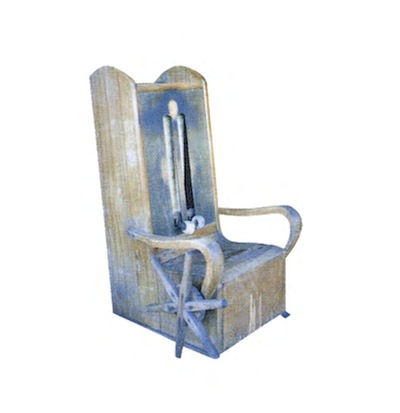The Invention of Shiatsu Massage Chairs
 Massage has long been shown to have a positive effect on reducing pain, promoting relaxation and enhancing overall health. Professional massage therapists study human physiology, clinical treatment and specific massage modalities to ease pain and promote healing.
Massage has long been shown to have a positive effect on reducing pain, promoting relaxation and enhancing overall health. Professional massage therapists study human physiology, clinical treatment and specific massage modalities to ease pain and promote healing.
Shiatsu massage developed from traditional Chinese medicine that incorporated acupuncture, massage and breathing into healing arts. Adapted by Japanese practitioners over centuries, the technique uses palms, thumbs and fingers to apply pressure to specific meridians and channels of energy in the body. Shiatsu treatment is believed to promote health, correct imbalances in the body and heal some types of illnesses. Massage therapists trained in Shiatsu undergo several years of study to become certified in the technique.
Understanding the principles of Shiatsu as a form of healing, Nichimu Inada, the head of the Japanese company Family Inada, developed a mechanized Shiatsu massage chair in 1962 that performs the motions of a Shiatsu massage therapist. The chair was declared a form of medical therapy by the Japanese government and is regulated by the Japanese Ministry of Health and Welfare.
Inada, based in Osaka, Japan, continues research and development of state-of-the-art technology in massage chairs. Features developed by Inada such as air bags, infrared electronic sensors and emulation of Shiatsu movements are now incorporated into most of the better chairs.
A precursor to the Inada chair was made by the Fujiiryoki Company, who built a wooden massage chair with electrically powered rollers in 1954. These two companies are among the top manufacturers of mechanized massage chairs today.
Shiatsu robotized massage chairs offer many standard features that emulate the hands-on feel of a real massage. A number of options are also available. Reclining chairs relieve pressure on the spine, allowing the body to more fully relax and the spine to elongate during the massage session. More expensive chairs have electronically controlled reclining mechanisms, while less costly chairs offer manual controls. The degree of reclining angle and curvature of the chair contribute to the effectiveness of the massage.
Shiatsu massage chairs use kneading, rolling and tapping motions that are similar to the strokes of a trained therapist. The kneading movements apply gentle pressure to meridian points, which then transfer to the rollers. Rollers stretch the spine and muscles along the vertebrae, which stimulate root nerves and increase circulation. The number and speed of mechanisms affect the performance and intensity of the massage. Some chairs allow adjustment of pressure, speed and intensity. Most chairs can be programmed to remember the preferences of several individual users.
As chairs gained popularity, foot rests with massage capability were added. The addition of air bags, developed in the 1990s, provided a full-body massage from head to toe. Air bags simulate the hand movements of a therapist, promoting blood flow and circulation.
A revolutionary innovation was the incorporation of infrared scanning into the chairs in the late 1990s, which uses sensors to scan the body of the person in the chair and locate pressure points. The mechanized rollers and beaters in the chair adjust to the individual configuration of each person, so the session is tailor-made. Inada chairs store information about more than 100 body types in its sensors. Time magazine rated the first Inada infrared chair as one of the best inventions of the year for 2001.
Several companies world-wide manufacture Shiatsu massage chairs. Inada, Fujiiryoki and Panasonic are the leading Japanese producers. In the United States, Human Touch, Cozzia Feel Good, HoMedics, Omega and Repose are some of the preferred brands.
.

